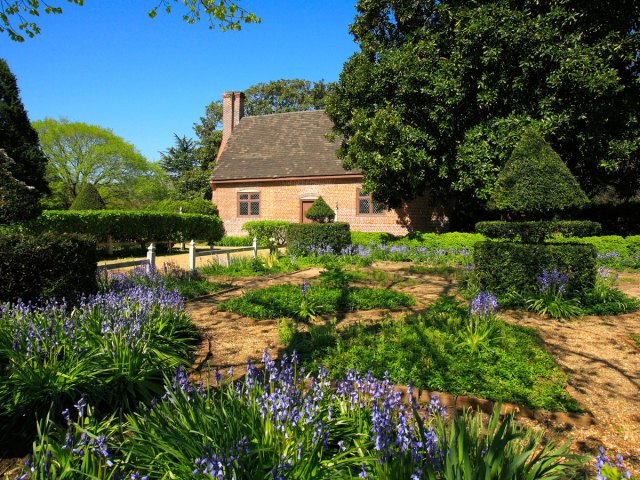Listen to the flute, thin and lonely as it serenades the high desert. The Red Willow peoples of Taos Pueblo have been living and making music here in what is now northern New Mexico for more than a thousand years, in one of the oldest continually inhabited communities on the continent. Today, Taos Pueblo is a UNESCO World Heritage Site as well as a National Historic Landmark. But most of all, it’s a thriving traditional community that opens its doors to visitors, offering them a rare glimpse into Native American culture and history. Below, discover the fascinating history of the pueblo and its people, along with tips on how to visit this ancient settlement and the descendants of those who constructed it.
First Water, Then People
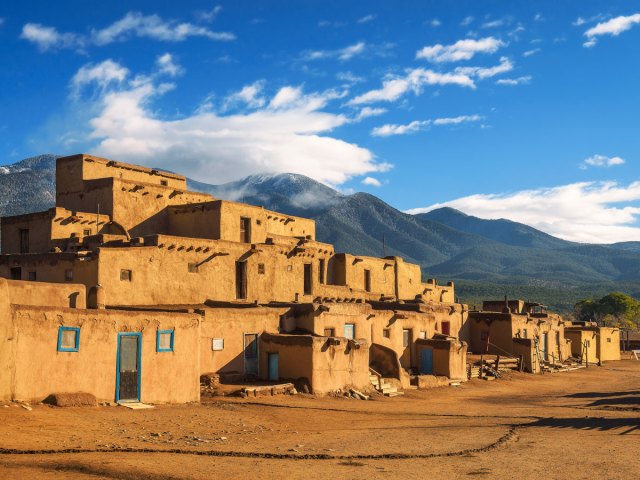
In a mountain valley high in the majestic San de Cristo Mountains, there is a small and sacred lake, the headwaters of a gentle stream that flows down into Taos Pueblo. The people of the pueblo believe they were created from these waters, named Blue Lake. Archaeological remains show that they inhabited the area for centuries before Christopher Columbus made his way to the Caribbean, with the pueblo’s first structures dating to around 900 CE.
The people who originally settled in the valley have origins with the ancestral Puebloans, who once lived throughout present-day Arizona, New Mexico, Utah, and Colorado. Taos (which means “places of the red willows” in the Tewa language) Pueblo became a center of trade between tribes along the Rio Grande and their Plains Tribes neighbors and would host a large fair after the fall harvests.
The Spanish Incursion
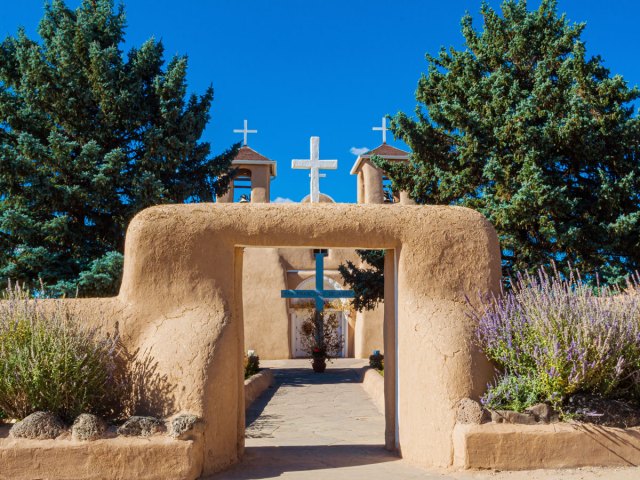
When Spanish conquistadors arrived in the region on August 29, 1540, they came upon a lush, neatly irrigated valley. Seeing the four- and five-story adobe buildings glistening in the sun, the Spaniards mistook it for a city of gold. But in reality, the architecture of Taos Pueblo is a study in simplicity. Constructed entirely from natural materials — mud, straw, and water — the pueblo harmonizes with the surrounding environment. Inside, maze-like corridors, rooms, and kivas (used for political and ceremonial purposes) reveal the intricacy of these spaces.
The years following the Spanish incursion were filled with battles and bloodshed interspersed with periods of independence and peace. The Tewa peoples integrated Catholicism with their Indigenous spirituality and built a series of mission churches honoring St. Jerome (San Geronimo). Several iterations of the church were built and then destroyed during conflicts between pueblo residents and invaders. Mass is still held in the 1850 version of the church, and visitors are welcome to worship.
In 1906, the U.S. government seized 48,000 acres of mountain lands, including Blue Lake, to become part of the Carson National Forest, opening the tribe’s sacred lands to recreation, hunting, and mineral extraction. The act sparked a 65-year-legal battle that ended when President Richard M. Nixon formally returned the land to Taos Pueblo.
The lake and surrounding area remain off-limits to anyone outside the tribe. However, ambitious hikers can hike to Williams Lake (in non-forbidden territory, approximately three miles from the trailhead starting at Taos Ski Valley). From there, it’s a strenuous climb to the top of the ridge, where you can walk until you reach an overlook of Blue Lake to the east.
Visiting the Pueblo
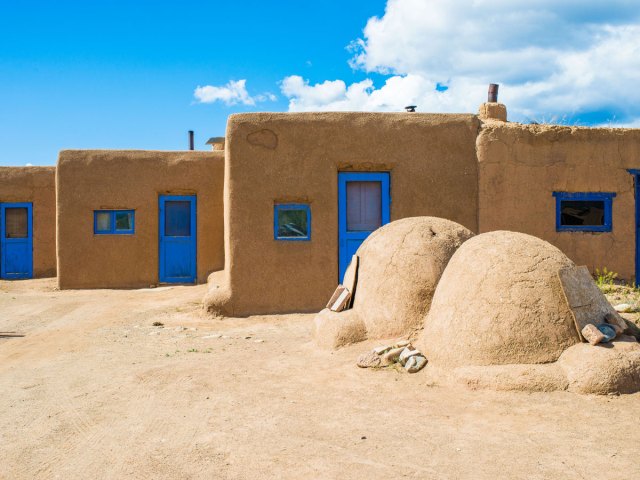
Taos Pueblo is a living testament to Native American culture, and members of the community still reside here without indoor plumbing or electricity. When you visit, realize that these structures are people’s homes, and please be respectful. Unless marked as open to the public, you shouldn’t enter a dwelling without being invited or photograph residents without their express permission. No photography is permitted in the church and during certain ceremonies. Note that the pueblo is closed for certain private ceremonies (be sure to check the calendar) and also may be closed unexpectedly when there is a death in the small community.
Artisans are on hand, selling pottery, rugs, drums, jewelry, and hand-made artwork — a great way to shop at the source and support the community. Bring cash to purchase souvenirs and also to buy some of the delicious foods that may be for sale. (Don’t skip the fry bread — a flat, fried dough that can be eaten alone or with various toppings like powdered sugar, honey, jam, or savory meats.)
Also consider joining a guided tour led by locals to gain deeper insights into the pueblo’s traditions, history, and culture. (It’s strongly encouraged to tip afterwards, as it’s how the guides support themselves.) Visitors can also take part in workshops or demonstrations offered by artisans — a hands-on way to learn about and appreciate their craftsmanship.
Tip: Taos Pueblo offers designated parking areas for visitors, but the village prohibits vehicles within its boundaries, so be prepared to walk.
Lodging and Nearby Attractions
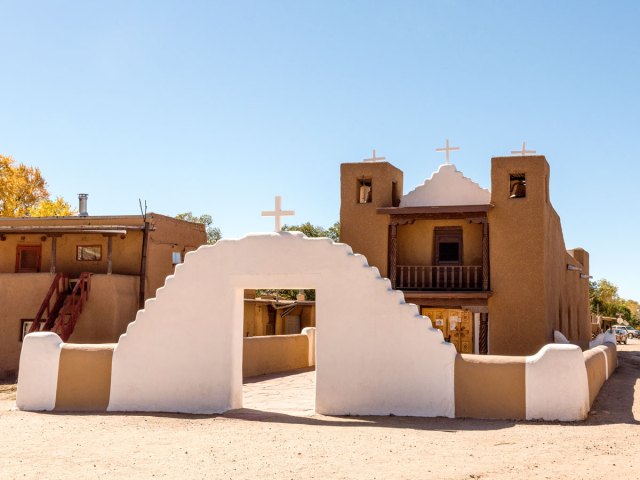
While Taos Pueblo doesn’t offer lodging within its grounds, the nearby town of Taos — with its main plaza dating to 1796 — is packed with accommodation options, from luxury hotels to charming bed-and-breakfasts. Taos is also surrounded by four mountain resorts that offer skiing and snowboarding as well as summer outdoor recreation: Sipapu, Angel Fire, Red River, and Taos Ski Valley. The town is particularly enchanting during the holiday season: From November through New Year’s Day, the often snow-blanketed buildings are illuminated by hundreds of candle-lit farolitos.
Taos is also famed as an art colony, drawing creatives with its piercing light and breathtaking landscapes. The town is home to more than 70 galleries, offering everything from painting and photography to sculpture, mixed media, printmaking, and glass. If you didn’t satisfy your crafts shopping desires at Taos Pueblo, you’ll also find a variety of moccasins, baskets, pottery, and carvings created by local artisans here.
Food is another art form, and Taos is an epicenter of northern New Mexican cuisine, with Puebloan, Spanish, and Mexican influences found throughout. A visit in the fall isn’t complete without bringing home a bag (or two) of the freshly roasted local green chiles. Locally harvested pinto beans and pinon nuts also make great souvenirs, along with ristras, long braided strands of dried red chiles that are an essential part of any New Mexican kitchen (and a favorite holiday decoration).
Those with a sweet tooth will want to stock up on biscochitos. The official cookie of New Mexico, these crisp shortbreads are traditionally made with lard and flavored with anise and cinnamon. Wine has been grown in New Mexico since 1629, and Taos offers a variety of tasting rooms along with breweries and a burgeoning distillery scene.
Spring and fall are the best time to visit, as the high desert can be baking in summer and bitterly cold in winter. But no matter when you arrive, a visit to Taos Pueblo will connect you to the living heartbeat of one of North America’s greatest cultural treasures.
More from our network
Daily Passport is part of Optimism, which publishes content that uplifts, informs, and inspires.













